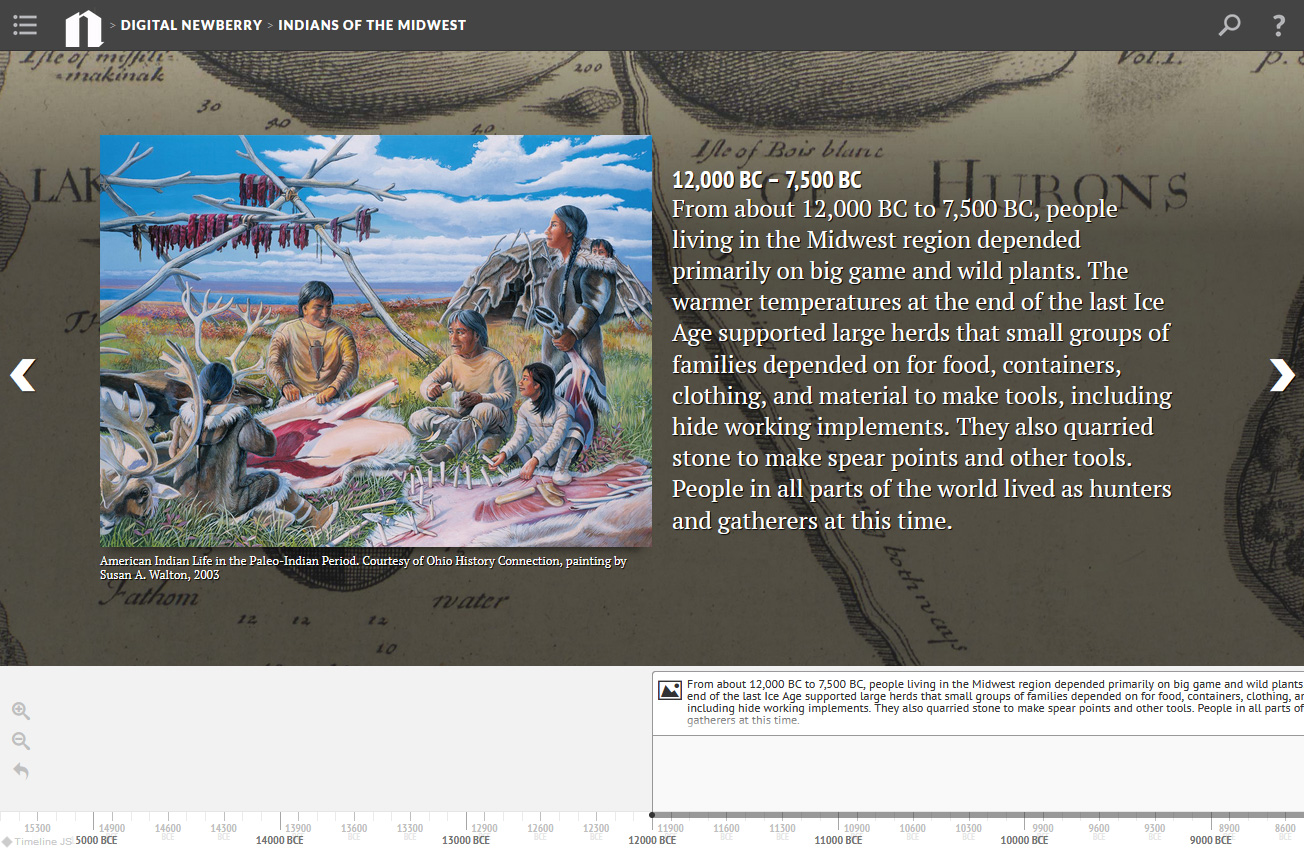Eras
Above: Aztalan, A.D. 1050-1250. Painting by Rob Evans , courtesy of the Kenosha Public Museum, © Rob Evans Murals
Was the Midwest largely unoccupied and undeveloped when Europeans arrived?
Before Europeans arrived, there were agricultural villages, towns, and urban areas throughout the region, as well as extensive long-distance trade routes. Go to "Moundbuilders" for more detail
About 2,200 years ago, a remarkable network of ceremonial centers containing mounds and earthworks began to develop where thousands of years before there had been small groups of big game hunters. At the ceremonial centers, rituals attracted people from many different ethnic groups. They created a network of multiethnic settlements and partnerships bolstered by gift exchange and several religions based on reciprocities between humans and spirit beings. When Europeans entered the region in the 17th century, they adapted to this way of life.
Why did Indian people welcome the French and English?
They regarded trade with Europeans as mutually beneficial. Go to "Fur Trade" for more detail
Native (or Indian) and European peoples lived in multiethnic, multi-racial trade centers. Europeans used old trade networks, participated in cultural and technological exchange, and behaved as relative equals. Native prophets introduced religions combining old and new ideas that enabled their communities to adapt to this new world.
Why are there treaties between the United States and Indian groups?
The U. S. government attempted to execute a policy of expansion with "honor." Go to "American Expansion" for more detail
The emergence of the United States as the dominant power in the region in the late 18th century sparked new adaptations as Native people tried to find ways for their communities to survive and their values to endure. The new American government officially accepted the role of protector of the rights of tribes to exist as distinct communities, but Congress was reluctant to fulfill this obligation during the 19th century.
What do tribal governments do?
These governments defend tribal interests in court, manage tribal finances, develop law and order codes, supervise tribal enrollment, and administer federal contracts and grants for a wide range of social and environmental programs. Go to "Sovereignty" for more detail
Indian communities worked with each other and with people from other groups in multiethnic alliances and religious movements. They struggled to protect their rights to live and subsist in their homelands and to perpetuate values of generosity and inclusiveness. When federal officials or the public at large threatened the tribes’ right to self-government, Indian social customs and religious rituals often went “underground” or conformed to Euro-American ideals in ways that did not conflict with Native values. When the political climate was favorable in the United States, as it was in the latter part of the 20th century, the tribes vigorously asserted their rights to home-rule, ethnic identity, and the protection of their homeland and its resources.
